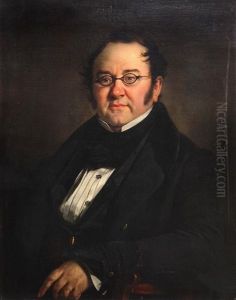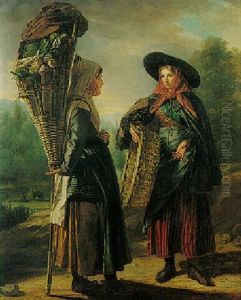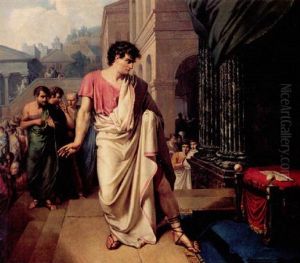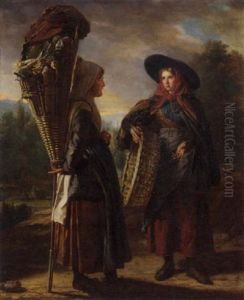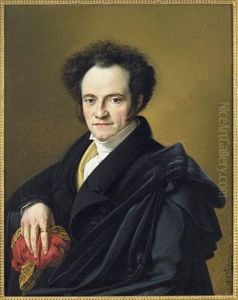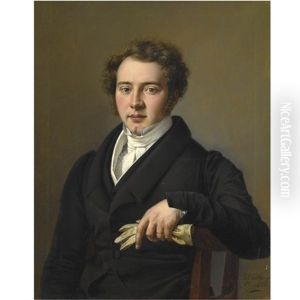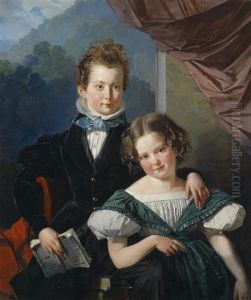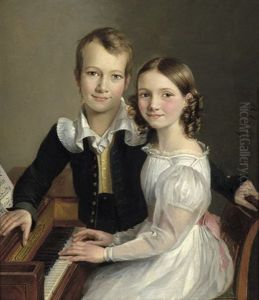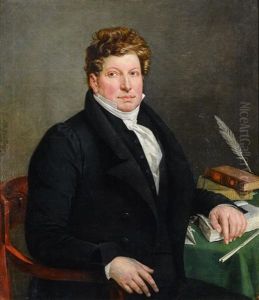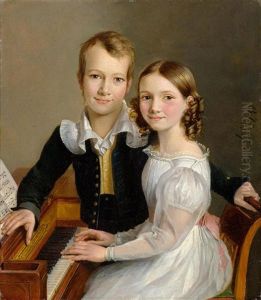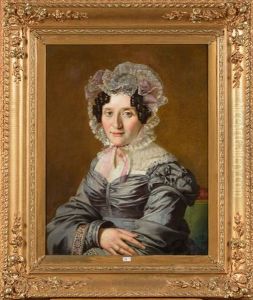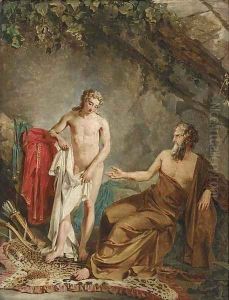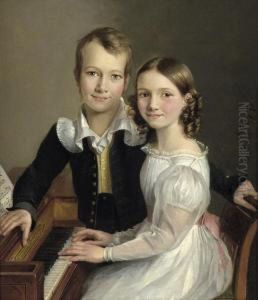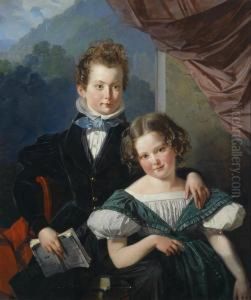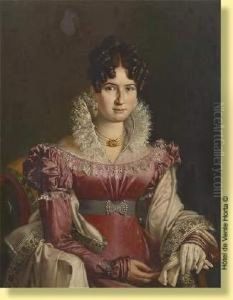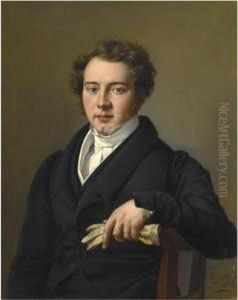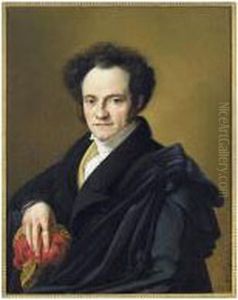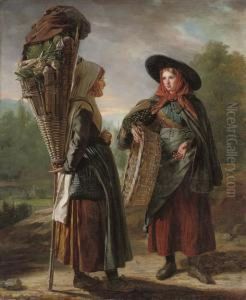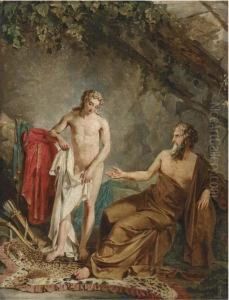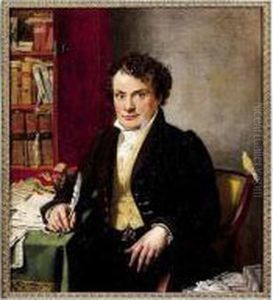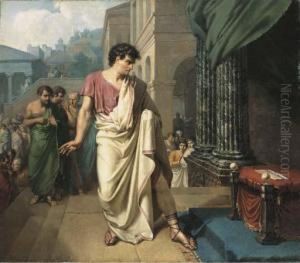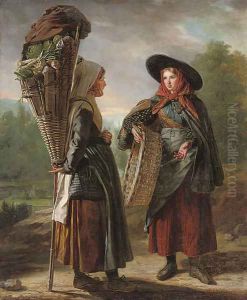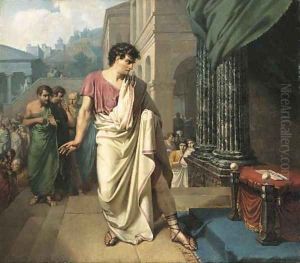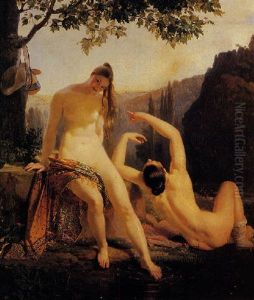Josef Bartholomeus Vieillevoye Paintings
Josef Bartholomeus Vieillevoye was a Belgian painter, born in 1798 in Liège, a city with a rich artistic tradition that significantly influenced his career. Not much is detailed about his early life, but it is known that he was deeply immersed in the vibrant cultural scene of Liège, which was a hub for artists, writers, and intellectuals during the 19th century. Vieillevoye's work is often classified within the Romantic movement, a period characterized by a strong emphasis on emotion, individualism, and a reverence for the beauty of nature.
Vieillevoye's artistic journey began in earnest when he enrolled at the Academy of Fine Arts in Liège, where he was mentored by some of the most prominent artists of his time. This education not only honed his technical skills but also enriched his aesthetic sensibilities, allowing him to develop a unique style that combined meticulous detail with a profound sense of emotion.
Throughout his career, Vieillevoye was known for his landscapes and portraits, which captured the essence of Belgian countryside and the character of its people with sensitivity and depth. His landscapes, in particular, are noted for their atmospheric quality and the way they evoke the emotional landscape of the Romantic era. Vieillevoye's ability to infuse his works with a sense of mood and feeling made him a significant figure in the Belgian Romantic movement.
Despite his contributions to Belgian art, Josef Bartholomeus Vieillevoye remains a somewhat obscure figure, overshadowed by his contemporaries. However, his works are cherished for their beauty and emotional depth, offering a window into the Romantic soul of Belgium. Vieillevoye continued to paint and contribute to the artistic community in Liège until his death in 1855. Today, his paintings can be found in museums and private collections, appreciated by those who seek to understand the rich tapestry of 19th-century Belgian art.
